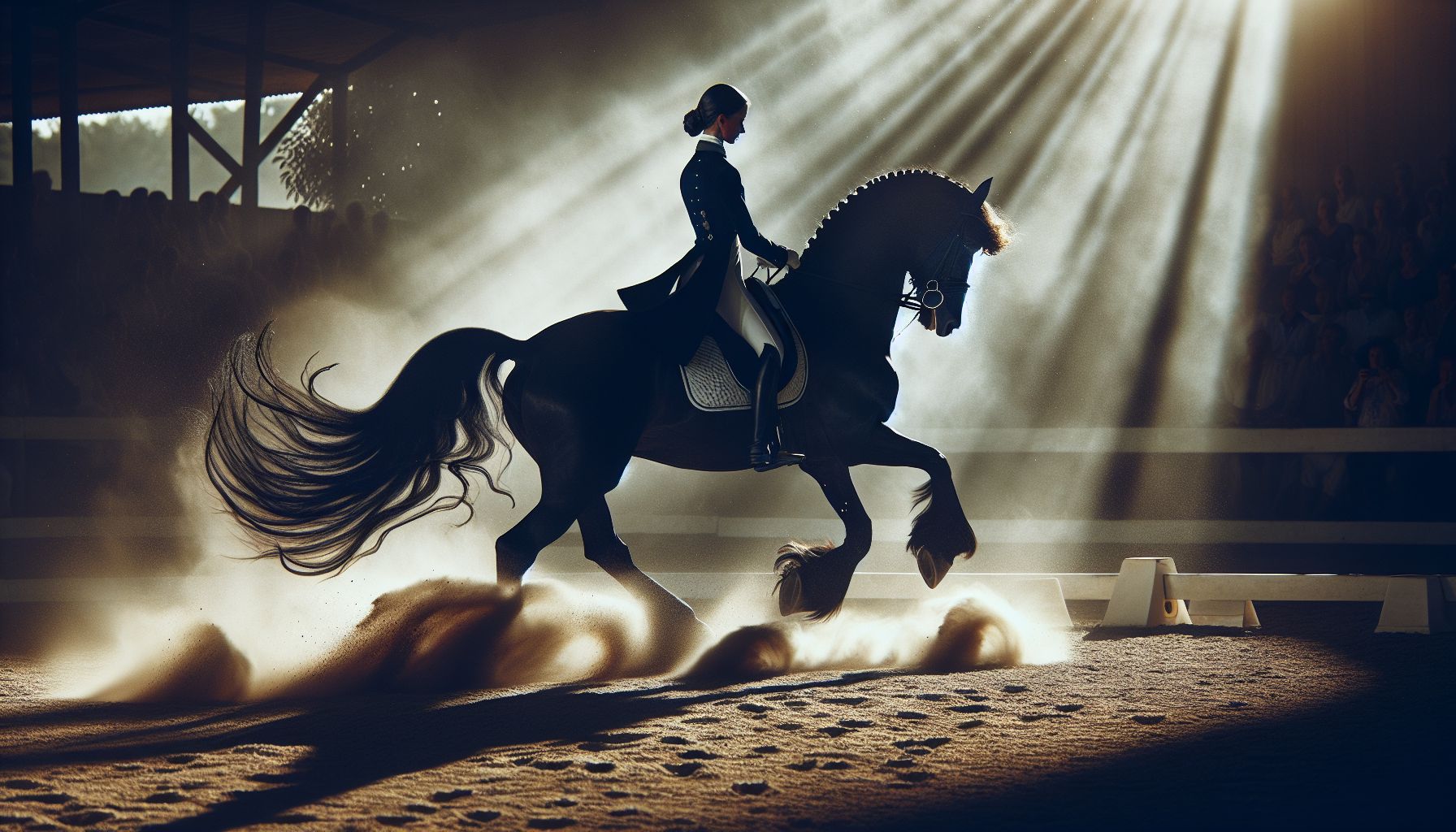Have you ever witnessed a dance between a horse and its rider that seemed almost magical? Where the two seemingly communicate through invisible whispers, moving with grace, elegance, and synchrony? That, my friends, is the awe-inspiring world of dressage.
Introduction: A Harmony of Horse and Human
Dressage, pronounced as “dress-ahhj,” is a breathtaking equestrian sport that combines athleticism, precision, and an unbelievable bond between horse and rider. Often referred to as “horse ballet,” dressage showcases the beauty of controlled movements, showcasing the talents of the equine athletes as they dance to the rhythm of classical music.
Origins and Evolution
Originating from ancient Greece, dressage has come a long way to become the refined discipline we know today. Originally used for military purposes, these intricate movements were designed to showcase the horse’s strength, agility, and obedience on the battlefield. Over time, it transitioned into a sport, emphasizing unity, balance, and lightness of movement, rather than solely military applications.
The Basics: Movements and Levels
Dressage is comprised of a series of choreographed movements performed in a specific order, collectively called a test. These movements range from simple transitions, such as halting, to more complex exercises, like the pirouettes and flying changes. The levels of dressage progress in difficulty, with higer levels incorporating more intricate and technically demanding maneuvers.
It Starts with the Horse
The foundation of dressage lies within the horse’s natural beauty and graceful movements. It is essential to recognize that every horse is unique, possessing its own strengths and weaknesses. Dressage training focuses on enhancing the horse’s natural athleticism and improving its overall responsiveness to the rider’s cues. By building trust and understanding, horse and rider become the perfect dance partners.
Rider’s Role: The Invisible Thread
While dressage highlights the horse’s contribution, the rider plays a crucial role in achieving the fluidity seen in top-level performances. The rider serves as the conductor, guiding their horse with the lightest of aids, maintaining an invisible connection. They must possess exceptional physical control, coordination, and an ability to communicate subtly through their body language and carefully placed cues.
The Art and Skill of Training
The journey of training a dressage horse is a delicate art that requires patience, perseverance, and a deep understanding of equine psychology. Dressage trainers dedicate years to perfecting their craft, gradually teaching the horse the intricate movements through a systematic training regime. It is through this ongoing partnership of trial and error that horse and rider establish a harmonious relationship.
The Dressage Arena: An Elegantly Symmetrical Stage
Picture a rectangular arena with carefully drawn markers along the perimeter, each representing specific movements to be executed. Dressage tests are judged based on the accuracy, harmony, and finesse with which these movements are performed. The arena serves as the stage where the horse and rider display their skills, while judges observe and assess their performance.
Competition and Scoring
Dressage competitions provide an opportunity for riders to showcase their talent and the bonds they have formed with their horses. The judging panel evaluates the execution of each movement, assigning a score to reflect the quality and accuracy of the performance. The highest-scoring rider takes home the blue ribbon, but true dressage enthusiasts believe that the real reward lies in the artistry and connection between horse and rider.
Benefits Beyond the Arena
While dressage may be an exquisite discipline and a display of athletic prowess, its benefits extend far beyond the arena. The training process instills discipline, dedication, and patience, both in the horse and its rider. Riders develop a deep appreciation for the partnership and trust required to achieve complete harmony with their equine partners. The lessons learned in the dressage world often translate into improved communication, empathy, and leadership skills in various aspects of life.
Becoming a Dressage Enthusiast
If the world of dressage has captivated your imagination, you may be wondering how to begin your journey. Finding a reputable dressage trainer is the first step. They will introduce you to the fundamentals, teach you proper riding techniques, and guide you on a path toward developing a harmonious connection with your equine partner. Remember, dressage is a lifelong pursuit, and every small step forward is an accomplishment worth celebrating.
Conclusion: Unveiling the Poetry in Motion
Dressage is a captivating combination of art, athleticism, and the indescribable bond between horse and rider. It is a dance where the intricacy of movement meets the subtlety of communication, resulting in harmonious performances that leave spectators in awe. In the world of dressage, horse and human become one, gracefully revealing what seems impossible until they step onto the stage. So, let your imagination run wild and step into this magical world, where poetry comes to life in motion.
